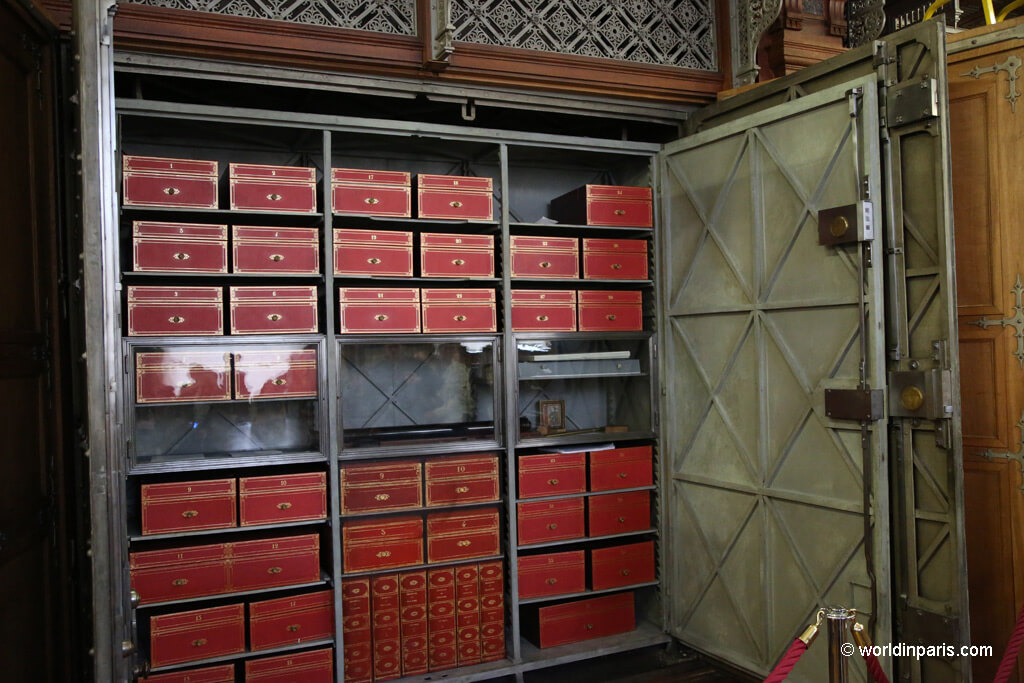Did you know that some of France’s most precious treasures are kept in the heart of the Marais?
L’Armoire de Fer (the Iron Chest) is an impressive strongbox located in the Archives Nationales de Paris, in the former Hôtels de Soubise in Le Marais. Amongst other things, the Armoire de Fer houses certain documents that are particularly precious for French National History.
The Armoire de Fer was built in 1791 at the National Assembly’s request to house the essential documents produced by the New Regime. Indestructible and inviolable, it is made up of two enormous metal boxes fitted together.
The Armoire de Fer was first installed in the Tuileries Palace near the Sessions Room, and it was moved to the Hotel Soubise in the Archives Nationales de Paris in 1848.
GOOD TO KNOW: This Iron Cabinet is not to be confused with King Louis XVI’s secret iron cabinet, also located in the Tuileries Palace, that hosted the documents the King wanted to keep hidden.
Inside the Armoire de Fer

Three keys are necessary to open the Iron Cabinet. Initially, the keys were kept by three different people: the President of the Assembly, his secretary, and his archivist, who needed to be in the same room and at the same time for the opening.
In the beginning, the Armoire de Fer was designed to keep three groups of objects:
> The original of the French Constitution (1791)
> The meter standard and the kilogram standard. These are the first copper prototypes presented at the National Assembly
> The plates to print the Assignats, the Revolutionary currency
Over the years, the number of precious objects kept inside the Iron Cabinet has increased considerably, and today it hosts:
> All the originals of the French Constitutions
> The last will and testaments of King Louis XIV and Napoleon I
> King Louis XVI’s hunting journal. It is interesting to note that on 14 July 1789, the day of the Storming of the Bastille, the King just wrote “rien” (=nothing).
> The Tennis Court Oath from 20 June 1789, on which the third Estate known as commoners vowed: “not to separate and to reassemble wherever necessary until the Constitution of the kingdom is established.”
> Queen Marie-Antoinette‘s last letter, moments before her execution.
> A medieval Imperial Bull written by Emperor Frederic II to King Charles IX in 1248. On this Imperial document, Frederic II allowed the French King to stop in Sicily to rest and stock up on his way to the Crusades.
There is also a little picture of Saint Jeanne d’Arc, France’s saint patron.
This tabernacle of national history is only opened on rare occasions, such as the European Heritage Days (when I could see it) or to shoot historical documentaries.


